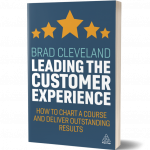In the Middle Ages, storytellers, often called troubadours, were honored members of royal courts. They were expected to know everything from noteworthy historical tales, to healing remedies, to court gossip. Few others had the ability to influence the thoughts and behaviors of people like the resident storyteller.
I’ve seen how successful customer experience leaders do much the same. Organizations and those who are part of them are, by nature, resistant to change. Without a compelling case or reason, they stay on course. Being a catalyst for change requires something different… something out of the norm… to stir them to action.
Enter a story—the customer’s journey. It might be a narrative of our hero, the customer, overcoming obstacles and achieving unparalleled success. Or it could be a story of tragedy, one that leaves your colleagues longing for a happier ending. Until you show the impact that your organization has on the lives of your customers, it will be difficult to drive meaningful change.
 Telling the customer’s story in a compelling fashion will answer the why. If it’s going to stick, you now must offer the how. The best customer stories conclude with a call to action. This could include sharing knowledge across departments, reshaping misleading communication, urging employees to capture unstructured voice of customer input, or others.
Telling the customer’s story in a compelling fashion will answer the why. If it’s going to stick, you now must offer the how. The best customer stories conclude with a call to action. This could include sharing knowledge across departments, reshaping misleading communication, urging employees to capture unstructured voice of customer input, or others.
Your job as educator is two-fold:
- To bring the reality of the customer’s journey to your organization in a way that can be easily understood by all.
- To educate and guide individual employees on the importance of their roles in that journey. The more relevant and specific you can make the call to action, the better. (Here’s a tip: give employees a straightforward means to participate. It is not enough to educate on the customer journey or CX… you’ll need to give them an opportunity to change a specific perspective or behavior.)
I’ve had a number of leaders tell me their approach has evolved. In their earlier days in customer experience, many would sound an alarm: “Hey, look at this voice of customer data. Look at all the ways we are failing them.” That’s understandable. As you listen to customers and begin identifying improvement opportunities, you’ll be eager to jump in and begin fixing things.
The problem is that guilt and the stick (versus the carrot) rarely motivate others for long. In fact, they can be downright discouraging. Many leaders have learned that inspiration goes much further. They put more emphasis on celebrating the improvements and victories along the way. There is absolutely a place for identifying problems and needed improvements. But showing progress and staying positive makes all the difference.

Excerpt from Leading the Customer Experience: How to Chart a Course and Deliver Outstanding Results by Brad Cleveland.



0 Comments